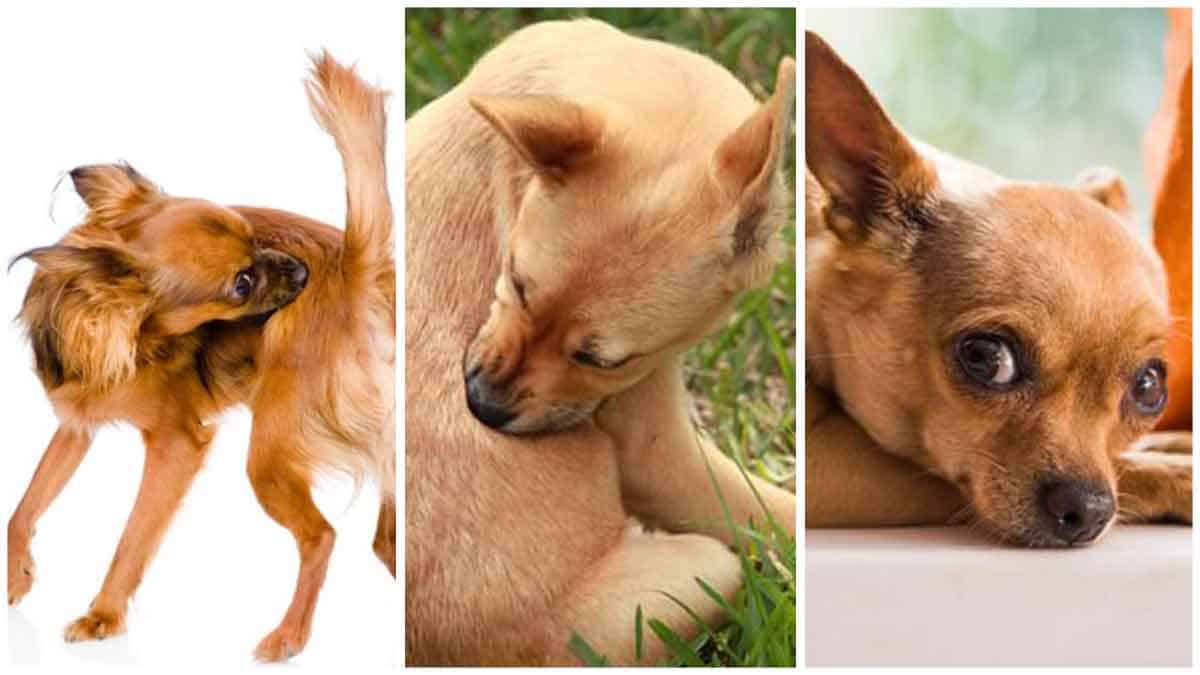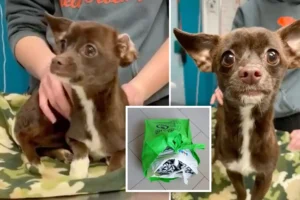Chihuahuas are naturally made for cuddling close, it seems. What happens, though, when your furry friend has skin problems? Itchy, scaly, scabby, flaky, oozy, or smelly skin makes your little pup miserable. So, here are the most common Chihuahua skin problems.

Like any other dog breed, Chihuahuas can develop dermal disorders that might keep us up at night. That’s as they lick or chew incessantly, and skin issues can cause our Chis to become lethargic and unhappy. That means that they’re uncomfortable in their own skin!
Let’s take a look at some common skin problems that Chihuahuas can face. Then, what your vet might suggest helping your little pup return to health again.
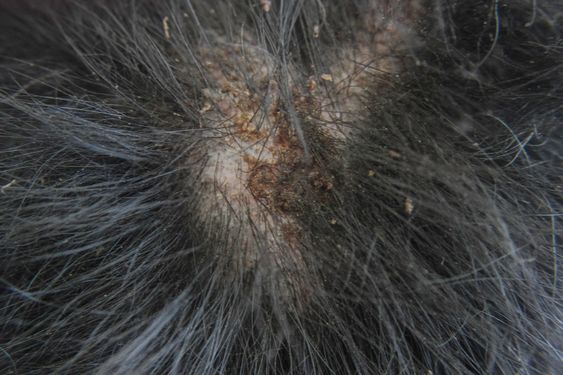
Flea Allergy Dermatitis
This is a common issue for our canine companions, no matter their size. Some dogs are highly allergic to the saliva that enters their skin from flea bites. Moreover, this causes skin inflammation that results in redness, scabbing, and intense itching – not fun!
Even one or two fleas can cause a reaction like this. So, prevention and treatment for these pups usually involve consistent monthly flea control that kills adult fleas before they can bite your dog. Chihuahuas are tiny and can be sensitive to some over-the-counter parasite products. So, it’s best to check with your vet about which type of prevention is safe to use.
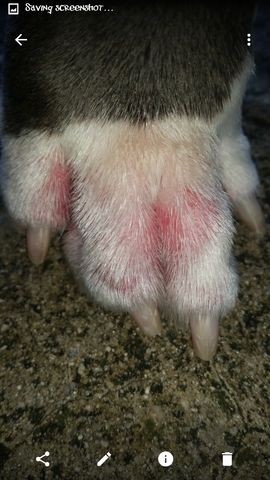
Mange
Mange is actually caused by microscopic parasites (mites) that live in your dog’s skin. There are two types of mites that can affect our pups. They are the Demodex mite, which causes demodectic mange, and the Sarcoptes mite, which causes sarcoptic mange (or scabies).
Mange can either affect just a small area of the body (localized mange) or in some cases, spread over a dog’s entire body (generalized mange). The signs of mange can be slightly different, depending on the mite. Mange tends to cause hair loss, redness, and sometimes intense itching, crusty sores, or thickened skin.
Your vet will usually perform a simple skin scraping test to diagnose mange on your Chihuahua. There can be a few different ways to treat it. You might be asked to use a prescription mange dip or shampoo on your pup. But, oral medications or topical drops like Revolution may also be recommended for treatment.
For most dogs, treatment usually spans weeks, if not months. For our poor pups that may have developed a secondary skin infection, antibiotics are often part of the treatment plan as well.
Vacuuming, and washing your dog’s bedding and toys regularly are essential to help control mange during treatment. And if Sarcoptes (scabies) is diagnosed, a check-up with your own doctor might not be a bad idea. That’s because it can also be transmitted to people.
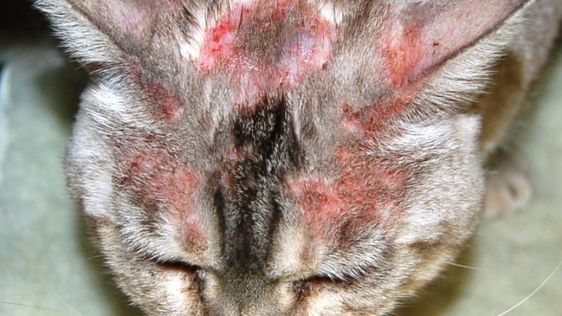
Hot Spots (Bacterial Dermatitis)
A bug bite that’s been scratched too often or a minor scratch that’s given bacteria a major opportunity. These can be two reasons why a hot spot can happen to your Chihuahua. Hot spots are red, moist areas, often with oozing discharge or crusts. They usually happen when something has irritated your pup’s skin and skin bacteria have been given the chance to cause an infection.
Your furry friend’s chewing or licking of the area only introduces more bacteria. This makes the infection worse, sometimes causing it to spread quickly within a day or two. And, this is a really uncomfortable situation for Your Chi! Treatment can involve clipping the hair around the area, cleaning the hot spot, antibiotics to control the infection, and sometimes medication like corticosteroids to help control the itching.

Allergies (Allergic Dermatitis)
It’s safe to say that many Chi owners are all too familiar with the distressing effects of allergies. And, many of our petite pups suffer from reactions to substances like grass, pollen, dust mites, and mold. Also, allergies to specific food proteins can be pretty common too.
For dogs and pet parents alike, the chronic problems caused by allergies can be a constant source of suffering. Moreover, they cause red, itchy skin, stained fur from chewing or licking, rashes, scabs, ear infections, and hair loss. To complicate the situation even more, some dogs react to more than one allergen. Then, this causes a compound effect on our poor dogs!
Allergies can be diagnosed through skin tests, allergy blood tests, or elimination food trials, but for the majority of our furry friends, there’s no actual ‘cure’ for chronic allergies – only management.
Treatment might involve a different plan of action for each dog, including food changes, different bathing routines, medication, and reducing exposure to environmental factors, chemicals, and foods that we know can cause our Chihuahuas grief.
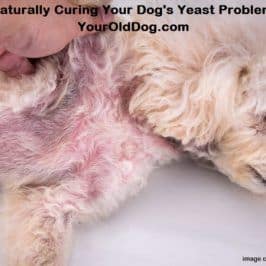
Yeast Infection
Often causing a distinct smell and a greasy feel to your Chi’s skin and coat, yeast overgrowth tends to happen in warm, moist areas like their ears, neck folds, and groin area. Small amounts of this microorganism normally live on your pup’s skin, but sometimes, if the skin is already irritated or compromised (by allergies or parasites, for example), then yeast can take the opportunity to multiply, causing its own set of problems.
Since yeast is microscopic, your vet might swab or scrape your pup’s skin to check for yeast overgrowth, and treatment usually involves solving any underlying health issues that might be already affected your Chihuahua, as well as medicated shampoos, ear rinses, or sprays to help control the spread of yeast.
Long-lasting skin problems can definitely be a frustrating situation for some Chihuahua lovers, but there are a few other things that you can do as well to help support your tiny tail-wagger’s immune system and skin health. Feeding a high quality, complete and balanced food helps your dog to maintain a soft, shiny, and healthy coat, as well as a good dermal and digestive barrier against allergens and other irritants, while regular grooming and ear care for your Chi can help you spot problem areas earlier, often making treatment easier on your little dog.
I have also found that adding a little coconut oil to their food helps with dry skin. You can even rub it into their dry skin too.
With the right combination of vigilance and care, we hope your Chihuahua can avoid the discomfort of chronic issues over their lifetime!
Source: ilovemychi.com

